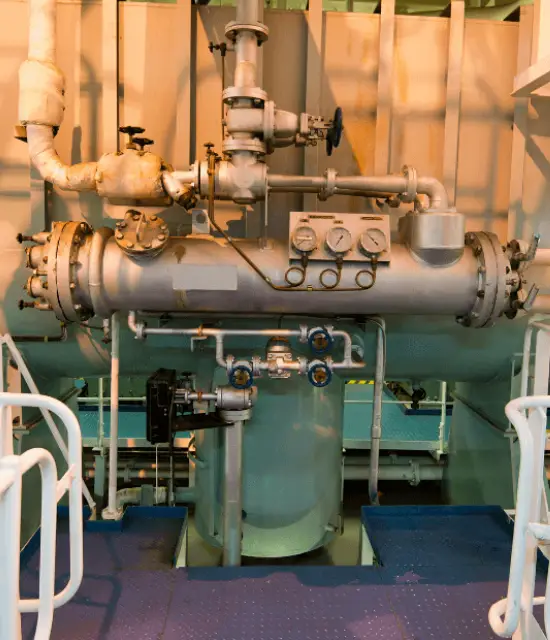about
Marine heat exchanger
Think of a marine heat exchanger as your vessel's temperature control system - it's the critical component that keeps everything running at just the right temperature. As leading marine heat exchanger manufacturers, these specialized devices transfer heat between different fluids while keeping them completely separate, handling everything from cooling powerful engines to keeping cabins comfortable in all conditions.
Purpose of the Marine Heat Exchanger
These workhorses of marine thermal management do much more than you might realize. They keep engine coolant at the perfect temperature to prevent overheating during those long journeys, while also ensuring your fuel oil stays at the ideal temperature for efficient combustion. Beyond engine care, they regulate your freshwater systems and can even capture heat that would otherwise go to waste, saving you fuel and reducing operating costs. For vessels of all sizes, a properly functioning heat exchanger isn't just convenient - it's essential for reliable performance and efficiency with marine oil cooler heat exchanger.

Working Principle of a
Marine Heat Exchanger
Fluid Inlet
- The procedure starts with hot fluid—most often engine coolant or lubricating oil that has picked up heat while running—entering the marine heat exchangers through a specialized inlet port capable of withstanding high temperatures and pressures typical in marine conditions.
Heat Exchange Process
- Within the marine heat exchangers, heated fluid flows in an engineered web of tubes or plates while the cooling medium, typically seawater, flows outside these channels with a precisely regulated flow pattern.
- The difference in temperature between hot fluid and cold seawater is ideal for the transfer of heat. With the physical principles of conduction and convection, thermal energy travels from the internal hot fluid to the cold seawater across metal surfaces that entirely separate these fluids.
Cooled Fluid Outlet
- Once it has released its heat load, the cooled internal fluid leaves the heat exchanger and goes back to the engine or system to repeat its cooling cycle. In the meantime, the seawater—now heated from taking in this heat—is pumped back into the ocean, thus finishing this efficient thermal management process.
Components of Marine heat exchanger
Shell
The outer casing that encloses the heat transfer elements.
Tubes
The tubes or channels through which one fluid flows.
Plates
In plate-and-frame exchangers, these are the flat surfaces that form the channels for fluid flow.
Benefits of Marine heat exchanger
Energy Efficiency
They help conserve energy by recovering and reusing waste heat.
Compact Design
They can be designed to fit into limited spaces on ships.
Reliability
With proper maintenance, they can provide long-term reliable service.
A marine heat exchanger is a crucial component in marine systems, designed to transfer heat between two fluids. If you have any more questions or need further details, feel free to ask!
Testimonials
Recently we bought a Radiators for our Generator. The Product Quality is Excellent .This Company produces custom made Radiators and Spares too. High Quality Products and Service Support.
krishna
CLEANTEK
We got support from ark engineering wonderful work done.He given idea for money save in genset. Ark engineering owner wonderful person.i will strongly recommend to ark engineering.
R.Prasannavenkatesh
Laser Experts India
Coimbatore
We have taken the services of the ark engineering for the service of our genset radiators.it was great Service at a better price .really professional and technical.
Suresh V
FAQ'S
What is the difference between a heat exchanger and a cooler?
While both are used for heat transfer, a heat exchanger can transfer heat between two fluids in either direction, while a cooler typically transfers heat from a fluid to a cooler environment.
How often should a marine heat exchanger be inspected and maintained?
The frequency of inspections and maintenance depends on factors such as the type of heat exchanger, its operating conditions, and the specific requirements of the vessel. Regular inspections, cleaning, and testing are essential for ensuring optimal performance.
Can a marine heat exchanger be used to heat living spaces on a ship?
Yes, marine heat exchangers can be used to heat living spaces by transferring heat from a warmer source, such as the engine coolant, to the seawater used for heating.